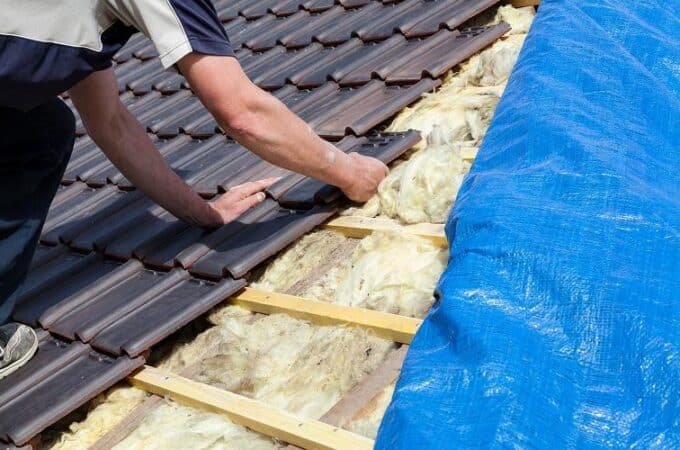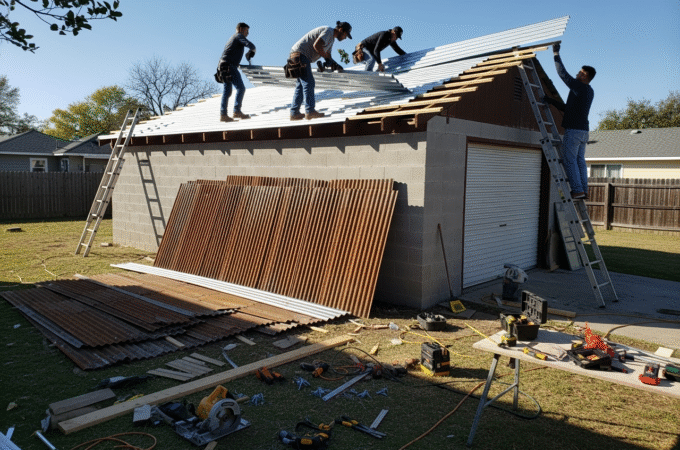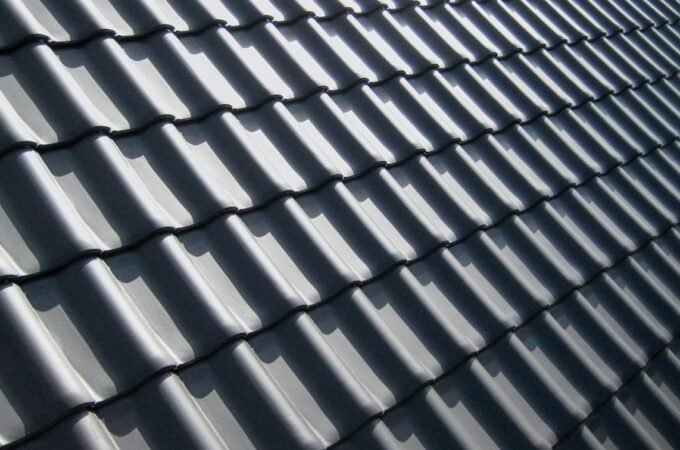
Building Up: Essential Insights for New Construction Roofing Projects
Table of Contents
ToggleIntroduction: Laying the Foundation for a Durable Roof
When a new building rises, its roof is a vital shield. (Imagine a new home with its roof trusses exposed, ready for its crowning layer.) This is new construction roofing. It means building a roof from the ground up, which is very different from simply replacing an old roof.
New construction offers a blank canvas. It lets us choose a roof that perfectly matches the building’s architectural vision, ensuring durability and structural integrity from the very start.
Here is a quick look at how these two types of roofing differ:
- New Construction Roofing involves installing a complete roof system on a brand-new building. It requires meticulous planning and coordination with the overall building design.
- Roof Replacement means removing an existing roof and putting a new one on an already built structure. It often has fewer design choices due to the existing framework.
(See our infographic below for more details on these key differences.)
In this guide, we will explore everything about new construction roofing. We will cover the process, materials, costs, and the importance of hiring experts. We aim to help you understand how to build a durable, lasting roof for any new project.

The Anatomy of a Complete Roofing System
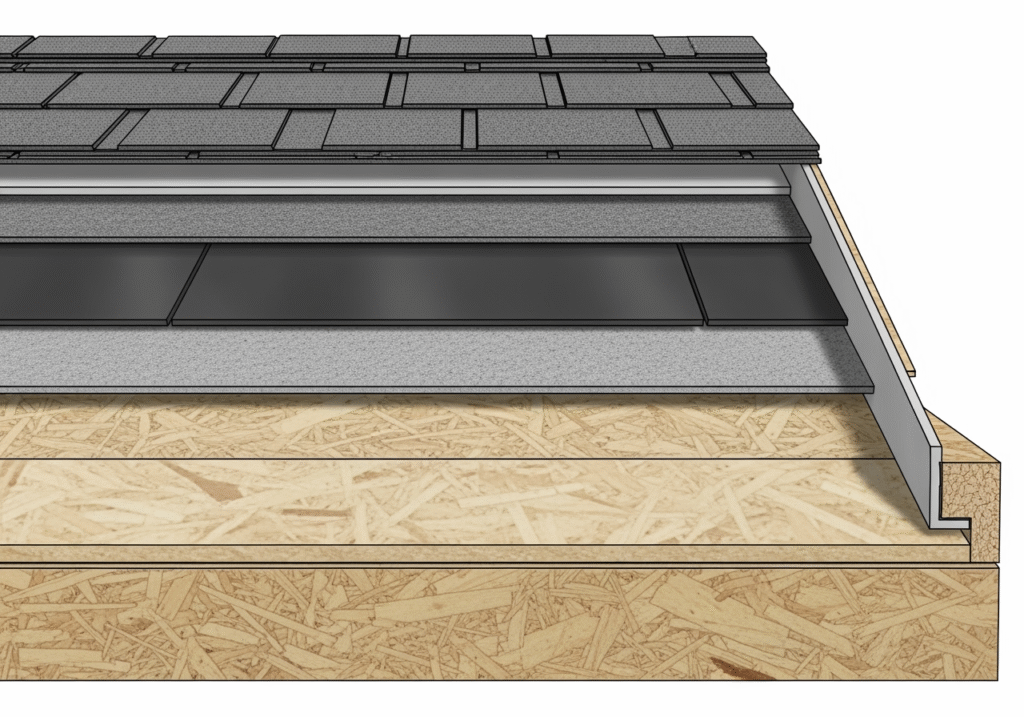
Understanding the components of a new roof is crucial for appreciating its function and ensuring its longevity. A roof is more than just the visible exterior material; it’s a complex system designed to protect your building from the elements, manage temperature, and contribute to structural integrity. When considering a new roof for your construction project, we look at several essential layers that work together seamlessly.
The foundation of any roof is the roof decking, typically made of plywood or OSB (Oriented Strand Board). This structural base attaches directly to the trusses or rafters, providing a solid surface for all subsequent layers. Its proper installation is paramount, as it directly supports the weight of the roofing materials and withstands environmental pressures.
Next comes the underlayment, a protective barrier installed over the decking. Traditional underlayments are asphalt-saturated felt, but modern synthetic options offer superior moisture resistance and durability. This layer is a secondary defense against water intrusion, especially during heavy rains or if the primary roofing material is compromised. A crucial addition, particularly in colder climates or areas prone to ice dams, is the water shield (also known as ice and water barrier). This self-adhering membrane provides extra protection in vulnerable areas like eaves, valleys, and around penetrations, effectively sealing out water.
Flashing is another critical component. It consists of thin pieces of metal (or sometimes plastic) installed at points where the roof meets a vertical surface, such as chimneys, skylights, vent pipes, or walls. It aims to divert water away from these vulnerable areas, preventing leaks. Proper sealing around all penetrations and joints further reinforces the watertight integrity of the roof system.
Finally, adequate ventilation is indispensable for a healthy roof. This involves a system of intake vents (typically at the eaves) and exhaust vents (at the ridge or near the peak), allowing continuous attic airflow. Good ventilation helps regulate attic temperature, preventing heat buildup in summer and moisture accumulation in winter. This not only extends the lifespan of the roofing materials but also plays a significant role in the building’s overall energy efficiency and prevents issues like mold and mildew.
Every component, from the structural decking to the final ventilation system, must be installed correctly and precisely. This meticulous approach ensures that your new roof provides robust protection and performs optimally for decades. For a detailed overview of the entire process, exploring a comprehensive guide to installing a new roof can be incredibly insightful.
Here are the essential components of a new roof:
- Roof Decking: The structural base.
- Underlayment: Secondary water barrier.
- Water Shield (Ice & Water Barrier):Extra protection in vulnerable areas.
- Flashing: Diverts water from roof penetrations and junctions.
- Sealing: Ensures watertight integrity around all openings.
- Primary Roofing Material: The visible outer layer (e.g., shingles, metal, tile).
- Ventilation System: Ensures proper attic airflow to regulate temperature and moisture.
- Gutters and Downspouts: Collect and direct rainwater away from the foundation.
Choosing Your Shield: A Guide to Roofing Materials
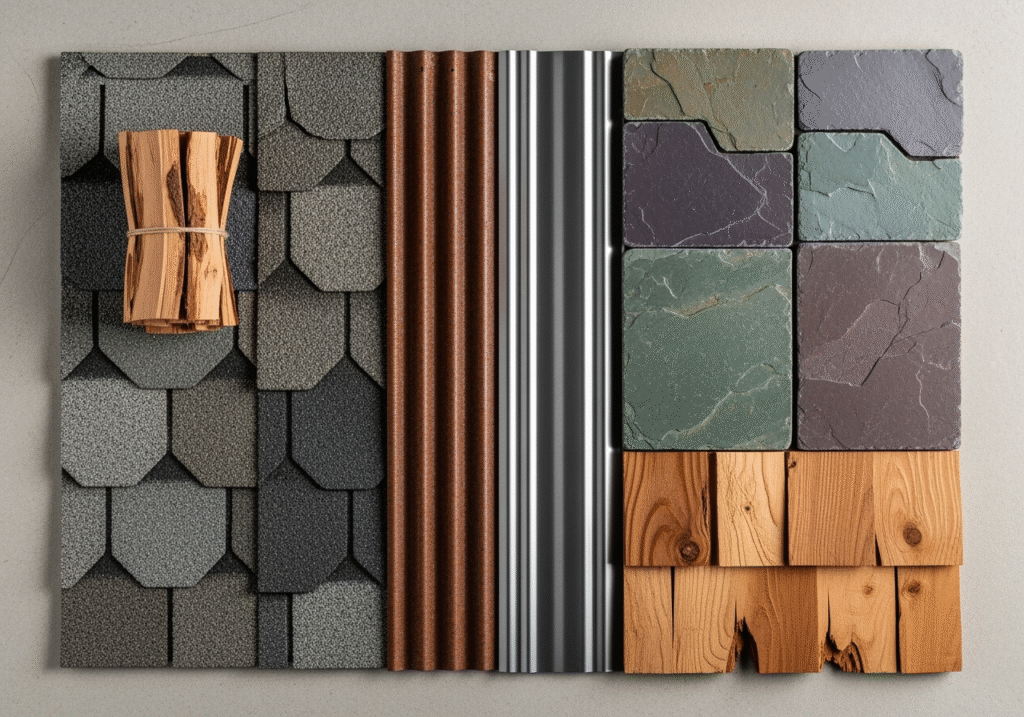
Selecting the right roofing material for new construction is one of your most impactful decisions. Unlike a roof replacement, where you might be limited by existing structural support or aesthetic matching, a new build offers the unique opportunity to choose a roof that perfectly suits your architectural vision, climate, and long-term needs. This choice influences the building’s appearance, durability, energy efficiency, and maintenance requirements.
One of the most popular choices for residential new construction is asphalt shingles. They are a favorite due to their affordability, versatility, and broad range of styles and colors. Asphalt shingles are cost-effective, relatively easy to install, and offer good protection against the elements. Modern architectural asphalt shingles provide improved durability and a more dimensional look, making them a common choice for many homeowners. Their energy efficiency can also be enhanced with reflective coatings or lighter colors, helping to reduce cooling costs.
For those seeking exceptional longevity and elemental resistance, metal roofing stands out. Metal roofs can last between 40 and 70 years, making them one of the longest-lasting roofing solutions. They are incredibly durable, resistant to fire, high winds, and impact, and can be highly energy-efficient due to their reflective properties. Available in various forms, including standing seam panels, metal shingles, and tiles, they offer a sleek, modern aesthetic or can mimic traditional roofing styles. Exploring metal roofing options can reveal the significant benefits of this robust material.
At the premium end of the spectrum, slate roofing offers unparalleled elegance and durability. It provides a high level of aesthetic customization and a classic appearance with historical value. Slate is naturally fire-resistant and impervious to water, and with proper installation and maintenance, it can last over a century. While the initial investment is higher, its longevity and timeless beauty make it a lasting choice for discerning homeowners.
When selecting, consider not just the upfront cost, but also the material’s lifespan, maintenance needs, and how it performs in your specific climate. The right material will improve your building’s curb appeal, protect your investment, and improve its overall performance for decades. Our comprehensive roofing materials guide provides extensive information for a deeper dive into available options.
Here’s a comparison of these popular new construction roofing materials:
Material Lifespan Initial Cost (Relative) Key Benefits Asphalt Shingles 20-30 years Low to Moderate Affordable, versatile, wide range of colors/styles, relatively easy to install. Metal Roofing 40-70+ years Moderate to High Exceptional durability, fire-resistant, wind-resistant, energy-efficient (reflective), low maintenance. Slate Roofing 75-150+ years High Best longevity, aesthetic appeal, fire-resistant, water-resistant, low maintenance. The Blueprint: Planning and Installation
This section covers the process from planning to execution, highlighting the critical steps and considerations for a successful new construction roofing project.
The Installation Process: What New Construction Roofing Involves
Installing a roof on a brand-new building is a precise operation that demands meticulous planning and seamless coordination. Unlike roof replacement, where existing structures dictate much of the work, new construction roofing is integrated into the overall building process from the ground up. This allows for optimal design and execution, ensuring the roof perfectly aligns with the building’s structural integrity and aesthetic vision.
The process begins with meticulous planning and coordination with builders. This involves reviewing architectural plans, confirming structural specifications, and ensuring that the roofing system chosen is compatible with the building’s design and intended use. Early collaboration helps identify potential challenges and allows for proactive solutions, preventing costly delays. It’s an opportunity to select a roof that suits your architectural vision and long-term needs right from the start.
Once the building’s framework is complete, the deck installation phase begins. This involves securely fastening the plywood or OSB decking to the roof trusses or rafters, creating a stable and uniform surface. Following this, the underlayment application provides the initial layer of protection against moisture. Depending on the climate and specific requirements, an ice and water barrier may be applied to vulnerable areas before the general underlayment.
Next, flashing installation is critical. Metal flashing is strategically placed around all roof penetrations (like chimneys, vents, and skylights) and at valleys and eaves to prevent water intrusion. This step requires precision, as improperly installed flashing is a common cause of roof leaks.
Finally, the shingle or panel attachmentbegins. This is where the chosen roofing material—asphalt shingles, metal panels, or slate tiles—is systematically installed. Each piece is carefully fastened according to manufacturer specifications and local building codes, ensuring a secure and weather-tight seal. Contractors ensure every detail is covered for a professional new construction roof installation. When you hire professionals for your new construction roof, you can rest assured that it will be installed correctly. A properly installed roof will last, require far less maintenance, and make your property much more secure and comfortable.
The process culminates in a final inspection, where every aspect of the roof’s installation is checked for quality, adherence to specifications, and compliance with all safety and building codes. This comprehensive approach ensures that the new roof is aesthetically pleasing, structurally sound, and ready to protect the building for decades. Exploring our roof installation process can be beneficial. For more in-depth information on the stages
Budgeting for Success: Cost Factors in New Construction Roofing
Understanding the financial aspects of the roofing system is paramount when starting a new construction project. While new construction roofing costs more than roof replacement because the process is much more involved, as you’re having the roof built from scratch, careful budgeting can help manage these expenses effectively. The roof cost for new construction projects can vary significantly depending on several key factors.
One of the primary determinants is the roof size and complexity. Larger roofs naturally require more materials and labor. Similarly, roofs with intricate designs, multiple valleys, hips, dormers, or a steep pitch will incur higher costs due to the increased labor and specialized techniques required for installation. Architectural features like skylights or chimneys add to the complexity and overall expense.
The material choice plays a substantial role in the budget. As discussed earlier, asphalt shingles are generally the most affordable, while metal and slate roofing represent a higher initial investment. However, it’s crucial to consider the long-term value: materials with longer lifespans and lower maintenance needs can offer significant savings over time.
Labor rates also vary based on geographic location, the contractor’s experience, and the job’s complexity. While labor costs for new construction roofing can be less expensive per square foot because the process is straightforward with no demolition required, the total labor cost for a complete system built from scratch will still be a significant portion of the budget.
Location influences costs due to regional material availability, local labor markets, and specific building codes or climate considerations that might necessitate certain materials or installation methods.
Beyond the immediate installation costs, smart budgeting for new construction roofing should also consider energy efficiency. Investing in cool roofs, which use highly reflective materials or coatings, can significantly reduce a building’s cooling loads and lead to substantial long-term savings on utility bills. Modern roofing materials and proper insulation contribute directly to a building’s overall energy performance, making the initial investment in energy-efficient options a wise financial decision for the future. By carefully weighing these factors, you can make informed decisions that balance upfront expenses with long-term value and performance.
Common Challenges and How to Overcome Them
While offering immense design flexibility, new construction roofing projects are not without their unique set of challenges. Navigating these obstacles effectively ensures a smooth project timeline and a high-quality finished product.
One of the most unpredictable challenges is weather delays. Rain, snow, high winds, or extreme temperatures can halt roofing work, pushing back schedules and potentially impacting other construction phases. To mitigate this, thorough weather monitoring and flexible scheduling are essential. Contractors often use weather-resistant underlayments to protect the exposed decking during brief delays.
Project scheduling and coordination with other trades are continuous problems. The roofing crew must work in tandem with framers, plumbers, electricians, and HVAC installers, ensuring that their work doesn’t interfere with or damage newly installed roofing components. Improper framing, for instance, can lead to uneven decking and compromise the roof’s structural integrity. Meticulous planning and clear communication channels between all parties involved are vital to prevent conflicts and ensure a seamless workflow.
Another significant challenge can be improper framing, which directly affects the roof’s structural integrity. Suppose the trusses or rafters are not correctly aligned or adequately supported. In that case, it can lead to an uneven roof plane, making it difficult to install the decking and roofing materials properly. This can result in aesthetic flaws, poor drainage, and even structural failure over time. Ensuring a solid base from the outset, with rigorous framing inspections before roofing work begins, is paramount.
Finally, adhering to building codes and obtaining the necessary permits can be complex. Codes vary by jurisdiction and are constantly updated. Staying abreast of these regulations and ensuring all installations meet or exceed them is non-negotiable for safety, legality, and warranty validity. Engaging experienced professionals knowledgeable about local codes and permit requirements is the best way to steer this challenge. By proactively addressing these common issues, we can ensure that new construction roofing projects proceed efficiently and result in a durable, compliant, high-performing roof.
Key Considerations for a Lasting Investment
Finalizing your new construction roof involves understanding the value of professional work and how it impacts your property’s future.
Why Professional Installation is Non-Negotiable

The phrase “you get what you pay for” holds particularly true regarding new construction roofing. While it might be tempting to cut costs, opting for anything less than professional installation can lead to a cascade of problems that far outweigh any initial savings. Hiring professional roofing contractors is essential for safe installations, adherence to building codes, and ensuring the longevity of the roofing project.
Firstly, code compliance is a critical aspect. Building codes are in place to ensure public safety and structural integrity. Professional roofing contractors are intimately familiar with local, state, and national building codes and ensure that every aspect of the installation meets these stringent requirements. Non-compliant installations can lead to legal issues, difficulties with insurance claims, and even forced removal and reinstallation, which is a costly and time-consuming ordeal.
Secondly, safety standards are paramount. Roofing is inherently dangerous, involving heights, heavy materials, and power tools. Professional crews are trained in safety protocols, equipped with the right gear, and insured to protect themselves and your property. Attempting a DIY approach or hiring inexperienced labor increases the risk of accidents, injuries, and property damage.
Moreover, professional installation often comes with artistry warranties. These warranties provide peace of mind, guaranteeing that if any issues arise due to installation errors, the contractor will rectify them at no additional cost. This commitment to quality is a hallmark of reputable roofing experts.
Adherence to manufacturer requirementsis also crucial for material warranties. Roofing material manufacturers often specify precise installation methods. The material warranty can be voided if these guidelines are not followed, leaving you responsible for costly repairs or replacements. Professional installers are certified by manufacturers and understand these specific requirements.
Professional expertise ensures longevity. A properly installed roof will last for its intended lifespan, require far less maintenance, and provide superior protection against the elements. It contributes to the building’s energy efficiency, curb appeal, and overall value. For a project of this magnitude, relying on Roof Experts new construction roofingensures compliance, safety, and longevity. Our team brings unparalleled experience and dedication to every project, ensuring your new roof is a sound and lasting investment. When you choose a reputable roofing company, you’re not just buying a roof; you’re investing in decades of protection and peace of mind.
Mark Ligon is the Marketing Manager at a leading e-commerce store in plumbing supply. Mark focus is on DIY projects and providing creative and practical advice to individuals looking to complete DIY projects of their own

